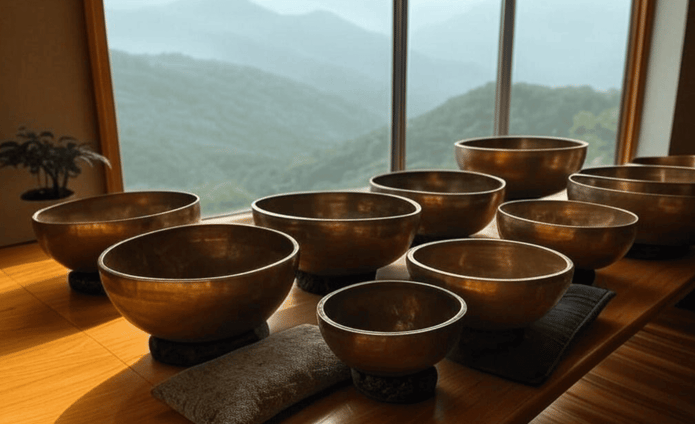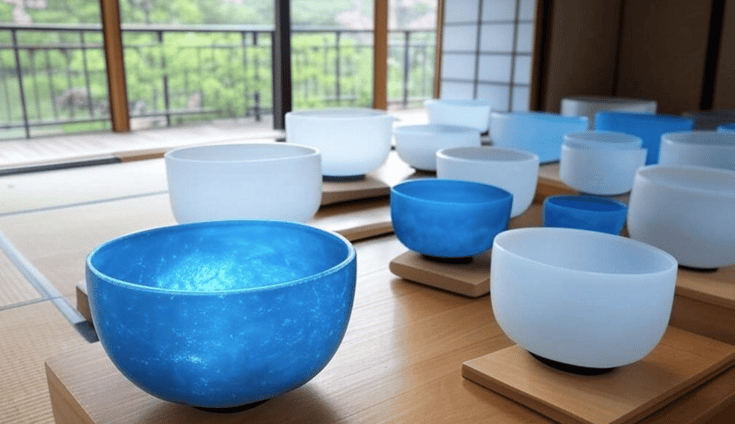Singing Bowls 101: A Guide to Choosing Your First Bowl
Discover how to select the ideal singing bowl for meditation, sound therapy, or spiritual practices. Explore types, techniques, and tips for beginners and practitione
SOUND HEALING


A Harmonious Beginning
Himalayan singing bowls, often associated with mystical soundscapes and meditative practices, hold a deep spiritual and cultural legacy. Originating in ancient Himalayan regions, these bowls are celebrated for their ability to produce harmonic tones that resonate deeply with the human spirit. This article delves into the history, types, and transformative power of singing bowls, exploring how they have evolved from traditional instruments to healing and meditation tools.
The Historical and Spiritual Origins of Singing Bowls
The Ancient Craft of Singing Bowls
Himalayan singing bowls date back thousands of years and are believed to have been used in the Himalayan regions, including Tibet, Nepal, and India. These bowls were meticulously crafted by skilled artisans, made from a unique alloy of metals such as copper, tin, and sometimes gold or silver. The exact origins remain mysterious, with oral traditions passing down the craft through generations.
Spiritual Connection and Uses
Singing bowls have always been intertwined with spirituality. Their tones are said to align with the vibrational frequencies of the universe, promoting balance and harmony. Monks used these bowls in rituals, meditation, and healing practices. Today, they continue to serve as bridges between the physical and metaphysical realms, facilitating deep introspection and spiritual awakening.
Types of Himalayan Singing Bowls
Classification by Size and Sound
Singing bowls vary in size, tone, and purpose:
Tiny Bowls (3–4 inches): Producing high-pitched tones, these are often used in travel and quick meditation sessions.
Small Bowls (4–6 inches): Ideal for beginners, these bowls offer a balanced and harmonious sound.
Medium Bowls (6–9 inches): Known for their versatility, these bowls are perfect for both meditation and group sound therapy.
Large Bowls (9–12 inches): Producing deep, resonant tones, they are commonly used for grounding and chakra alignment.
Giant Bowls (13 inches and above): Rare and majestic, these bowls often become centrepieces in group meditations or temples.
Antique vs. Modern Bowls
Antique bowls, with their aged patina and unique timbre, are considered treasures. Modern bowls, while often lacking the same historical charm, can still produce exceptional sound quality when crafted with care.
Crystal Bowls vs. Himalayan Singing Bowls: A Vibrational Contrast
While Himalayan singing bowls are rooted in ancient traditions and crafted from metal alloys, crystal bowls represent a more modern innovation in sound healing. Made from pure quartz, crystal bowls produce clear, resonant tones that are often associated with high vibrational energy. They are particularly effective in chakra alignment and energy clearing due to their crystalline structure, which amplifies sound frequencies.
Unlike the warm, earthy tones of metal bowls, crystal bowls create a bright, ethereal sound that can fill a room with their expansive vibrations. Both instruments are powerful tools for meditation and healing, but their distinct tones and materials cater to different preferences and spiritual needs, making them complementary rather than competing tools in the world of sound therapy.


The Craftsmanship Behind Singing Bowls
Materials and Alloys
Traditionally, singing bowls were made from an alloy of seven metals, symbolizing celestial bodies in ancient traditions. The meticulous blending and forging of these metals play a crucial role in the tonal quality of the bowls.
The Art of Hammering
Each bowl undergoes a rigorous process of heating, hammering, and cooling. This artisanal method not only shapes the bowl but also imbues it with unique acoustic properties, ensuring no two bowls sound alike.
The Healing and Meditative Power of Singing Bowls
Sound Therapy and Vibrational Healing
The harmonic vibrations of singing bowls resonate with the body’s energy fields, promoting relaxation and healing. Sound therapy sessions often involve placing the bowls on or near the body to stimulate energy flow, alleviate stress, and reduce pain.
Chakra Alignment and Spiritual Growth
Each bowl is tuned to a specific frequency, often associated with one of the body’s seven chakras. Playing the bowl helps align and balance these energy centres, fostering physical and emotional well-being.
Practical Tips for Choosing and Playing Singing Bowls
Selecting the Right Bowl
Purpose: Determine whether you want a bowl for meditation, healing, or spiritual practices.
Tone: Test the bowl’s sound quality. A good bowl will produce a long, clear tone with harmonious overtones.
Authenticity: Verify the origin and craftsmanship, especially when purchasing antique bowls.
Techniques for Playing
Striking: Use a mallet to gently tap the bowl, producing a clear and resonant tone.
Circling: Run the mallet around the rim of the bowl to create a continuous sound wave.
Water Bowl Technique: Add water to the bowl and circle the mallet to produce mesmerizing vibrations.
The Cultural Renaissance of Singing Bowls
From Ancient Temples to Modern Wellness Centers
Singing bowls have transcended their origins, finding a place in global wellness practices. They are now used in yoga studios, therapy sessions, and even modern music compositions, blending tradition with contemporary applications.
Preserving the Legacy
Efforts are being made to preserve the traditional methods of crafting singing bowls, ensuring future generations can experience their authentic beauty and power.
Conclusion: A Timeless Resonance
Himalayan singing bowls are more than just musical instruments; they are vessels of history, culture, and healing. Their ability to connect the physical with the spiritual, and the ancient with the modern, ensures their timeless appeal. Whether you are a novice exploring meditation or an experienced practitioner, singing bowls offer a profound way to harmonize with the world and yourself.
